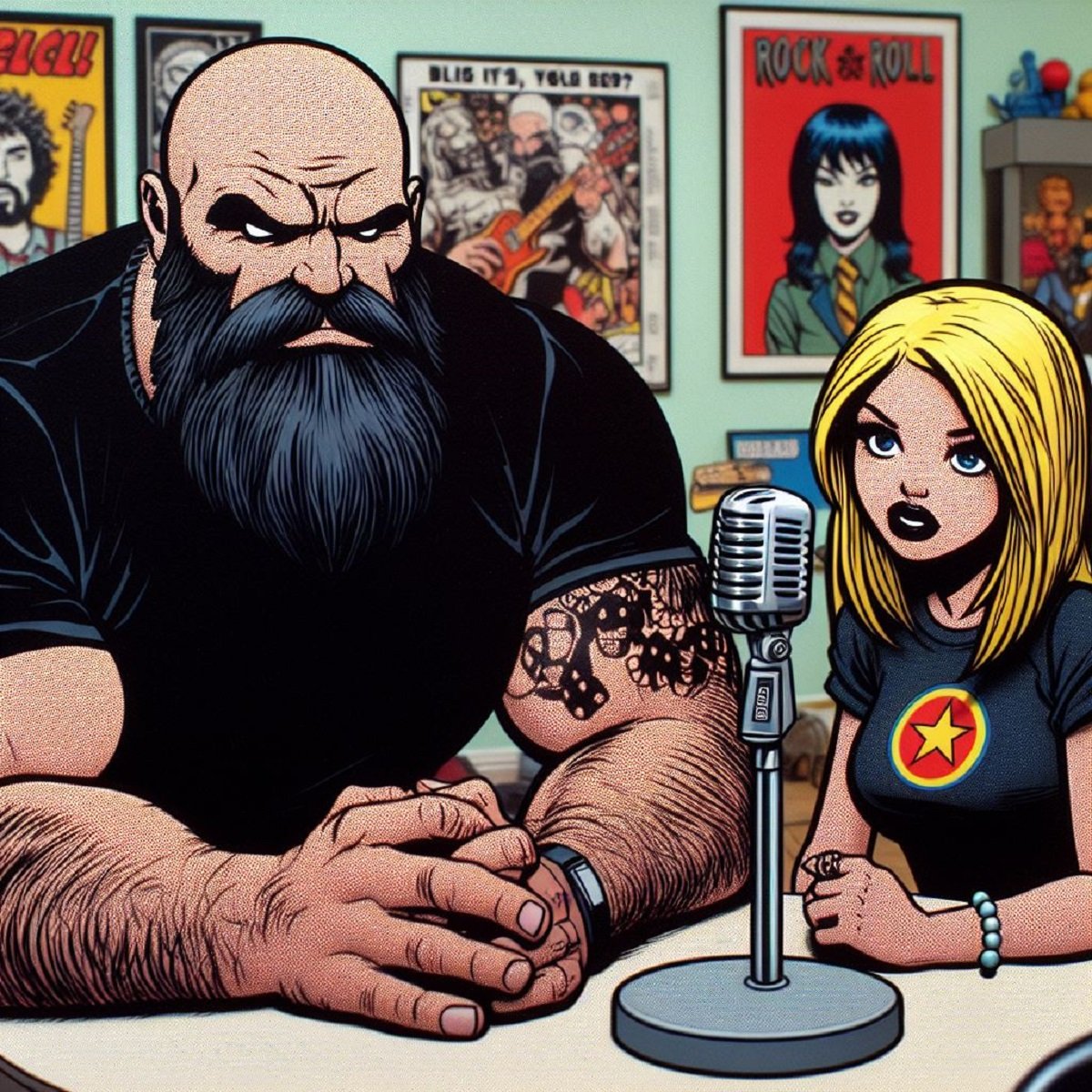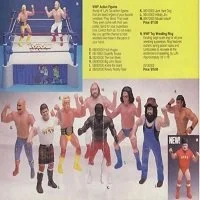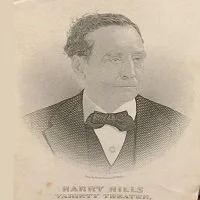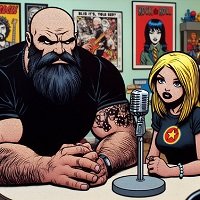The Story of Looney's Tavern and a Divided South During the Civil War and the Free State of Winston (not Jones).
Photo by When It Was Cool. Support WIWC.
Standing in front of the Winston County Courthouse in Double Springs, AL is the statue "Dual Destiny" depicting a half Union and half Confederate soldier.
By: Karl Stern (@dragonkingkarl, @wiwcool, karl@whenitwascool.com)
In schools across the United States of America the history of the Civil War is often taught as a pretty cut and dried affair. The South (or the Confederacy) were the bad guys and the The North (or The Union) were the good guys. The nation was divided over slavery and the south wanted out of the Union in order to maintain it... or so the story goes. But what if it wasn't so cut and dried? What if there were pockets of southern resistance who, how shall we say it, didn't want to go along with the program? Here is the story of what your American history books may have left out.
DVD cover to the free state of jones. Support When It was Cool.
In 2016 a movie loosely based on some of these events was released called The Free State of Jones. Economically speaking, the movie was a flop making back only half of what was spent on it ($25 million dollars out of a $50 million dollar budget) and receiving mixed critical reviews. The movie told the story of Jones County, Mississippi during the Civil War and the time immediately following.
The plot of the movie was fiction but events from the film, credited as "based on the books The Free State of Jones by Victoria E. Bynum and The State of Jones by Sally Jenkins and John Stauffer", drew from actual history.
Wikipedia summarizes the history of Jones County, Mississippi this way:
As Mississippi debated the secession question, the inhabitants of Jones County voted overwhelmingly for the anti-secessionist John Hathorne Powell, Jr... But, at the Secession Convention, Powell voted for secession. Legend has it that, for his vote, he was burned in effigy in Ellisville, [Mississippi] the county seat.
The reality is more complicated. The only choices possible at the Secession Convention were voting for immediate secession on the one hand, or for a more cautious, co-operative approach to secession among several Southern states on the other... Jones County had mostly yeoman farmers and cattle herders, who were not slaveholders. They had little use for a war over a “state’s right” to maintain the institution of slavery.
During the American Civil War, Jones County and neighboring counties... became a haven for Confederate deserters...
However limited the success, The Free State of Jones probably became the best known tale of independent minded southerners not so thrilled with the south leaving The Union but it was hardly the only one. I introduce to you: The Free State of Winston.
If a state can secede from The Union, then it stands to reason that, a county can secede from a state. That was the logic used by Charles Christopher Sheats and others when the state of Alabama seceded from The Union. The people in the heavily forested northwest and north central Alabama had little to gain by separating from a country that many of their grandfathers had fought for. The area was sparsely settled, housed few slaves (122 is believed to be the exact number), and preserved deeply rooted family ties to forefathers who had fought in the Revolutionary War and won independence to begin with. Still to this day there is a strong sense of "what business is it of ours?" about things in the area.
If you are looking for information about The Free State of Winston in Wikipedia you will be directed to a page titled The Republic of Winston. I can tell you with absolute certainty that I have lived here my entire life and I have never once heard the area referred to as the Republic of Winston, it always has been and, I believe always will be, the Free State of Winston.
Looney's Tavern historical marker. Support When It Was Cool.
If you are confused about the history of "The Free State of Winston" here are some bullet points for you. While the entire story of Looney's Tavern is rather complex and riddled with Civil War era politics, it can be understood. Here are a few simple answers to some Free State of Winston questions.
1) Did Winston County actually secede from the state of Alabama?
No. Not exactly. The term "Free State of Winston" comes from a statement allegedly made by "Uncle Dick" Payne at the famed Looney's Tavern meeting when he allegedly stood and shouted: "Ho! Ho! Winston secedes- the Free State of Winston! The Free State of Winston!". The remark was made sarcastically. Winston County did not officially secede from the state.
2) Where was Looney's Tavern?
The tavern, owned by Bill Looney, where the meeting took place was just north of Addison, Alabama on highway 41. There is a historical marker denoting the location.
3) When did the incident at Looney's Tavern take place?
July 4, 1861. A crowd of between 2,500 and 3,000 people met from numerous north Alabama counties and a few from out of state.
4) What was the meeting about?
Well, in their own words, here are the three items discussed at the meeting, the wording of the resolutions as phrased in the book The Free State of Winston by Wesley S. Thompson.
- We commend the Honorable Chris C. Sheets and the other representatives who stood with him for their loyalty and fidelity to the people whom they represented in voting against secession (of Alabama from the Union) first, last, and all time.
- We agree with Jackson that no state can legally get out of the Union, but if we are mistaken in this, and a state can lawfully and legally secede or withdraw, being a part of the State, by the same process of reasoning, a county could cease to be part of the State.
- We think our neighbors in the South made a mistake when they bolted the convention and the Democratic party, resulting in the election of Mr. Lincoln, and that they made a greater mistake when they attempted to secede and set up a new government. We, however, do not desire to see our neighbors in the South suffer wrong, and therefore, we are not going to take up arms against them; but on the other hand, we are not going to shoot at the flag of our fathers, Old Glory, the flag of Washington, Jefferson, and Jackson. Therefore, we ask the Confederacy on the one hand and the Union on the other, to leave us alone, unmolested, that we may work out our own political and financial destiny here in these hills and mountains of north Alabama.
5) Was Winston County alone in attempting to secede from the Confederacy?
No, there were meetings also in Lawrence and Franklin Counties and a serious discussion between many north Alabama Representatives to form a new state which was to be called "Nickajack". Apparently the talk was serious enough to panic some politicians in the state.
The proposed state of nickajack.
6) So, were the people of Winston County on the side of the Union or the Confederacy during the Civil War?
Both. The county had many Confederate veterans and many 1st Alabama Calvary veterans which was a Union regiment based out of Corinth, Mississippi. So, just as the aptly named statue that stands in front of the court house, Winston County was indeed a "Dual Destiny". Winston County did supply the Union with more troops than the Confederacy.
During the Civil War there were multiple incidents of atrocities committed against the rural people of the Free State areas. The Confederate Home Guard lynched, beat, and harassed people in the area for refusing to join up with the Confederate army.
Even post Civil War, it is believed by many, that the state of Alabama retaliated against the county by splitting up it's state Representative districts into multiple sectors which was a huge economic blow to the county. Basically, this cripples the area politically in that it's state Representatives have little voter base in the county and, thus, little reason to spend money there.
Oddly enough, the area has held on to a largely southern culture lifestyle as well. It seems later generations identified more with southern heritage than did their separatist forefathers. Confederate battle flags are still seen commonly flown from vehicles and homes and seldom ever do you hear reference made to the counties divided past. Aside from a lone barn with the words "Free State of Winston" painted on the side and the Dual Destiny statue in front of the county Court House, there is little left to suggest the once bitter struggle between the north and south and the war that split the nation and the holdouts of north Alabama.
If you found this article interesting consider becoming a Patreon supporter. That is how When It Was Cool keeps our website and podcasts online, plus you get lots of bonus content including extra and extended podcasts, articles, digital comics, ebooks, and much more. Check out our Patreon Page to see what's up!
If you don't want to use Patreon but still want to support When It Was Cool then how about a one time $5 PayPal donation? Thank you!

































